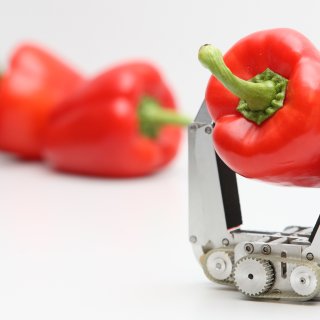- Scientific challenges: Collective system behaviour, Distributed sensor systems & networks, Miniaturization, System safety & robustness
- Applications: Traffic and pollution observation, Ship & logistic tracking, Space exploration, Self-deploying sensor networks
- Links: Delfly, Delfi n3Xt, Olfar, DRIs: infrastructure, climate & energy, Delft Institute for Research on ICT
- Faculties: L&R, EWI, TBM, 3ME
- Theme leaders: Guido de Croon and Chris Verhoeven
Inexpensive, highly miniaturized autonomously flying aircraft and spacecraft and roving robots have the capability to cooperate in swarms that can quickly provide information on large area infrastructures in harsh environments where other data collection systems are hard to deploy or use. Unmanned Aerial Vehicles (UAV’s) are already an option when ground accessibility is restricted, or simply as a cost-effective means to provide observation capabilities in places where it is temporarily needed. Examples include observation of crowds at large events, traffic observation, geological exploration, climate observation or disaster relief. Operation in a swarm adds the two key factors robustness and omnipresence and autonomous operation makes that the swarm goes where the data is. Much research is done on large sensor networks and their benefit is clear. Flexibility and cost for deployment of these networks is still an issue. Swarms are “self-deploying” flexible and robust sensor networks.
Local observations of UAV’s are easily combined with the global observations by nano-satellite swarms. This provides high resolution details where necessary in a global data set. A multi-tiered system is created that can respond flexibly to provide observation at differing levels of detail.
TU Delft has established itself as one of the leading creators of swarm elements by flying the nano-satellite Delfi-C3, launched in April 2008 and still fully functional, and by demonstrating the practical implementation of the highly-miniaturized UAV, the “Delfly micro”, carrying a camera and acoustic sensors. Both systems fully exploit the excellent soft and hardware capabilities that are unique for TU Delft. Along with the research to build these individual sensor-carrying automata, an increasingly clear picture has been established of what these highly miniaturized systems are and how they can be optimally used.
Within the TU Delft Robotics Institute, it is our first goal to create highly miniaturized spacecraft and aircraft, increase their level of autonomy and demonstrate the proper operation of these swarm elements both in the air and in space. The goal is to make them cooperate in a swarm and demonstrate the feasibility of data-collecting swarms.
